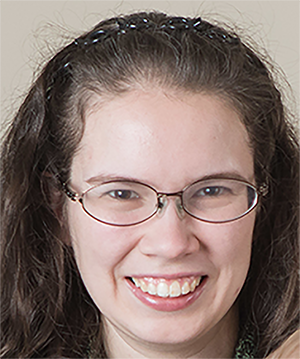Susan VanderPlas
Affiliation
Assistant Professor, University of Nebraska
Education
PhD, Statistics, Iowa State University
MS, Statistics, Iowa State University
BS, Psychology & Applied Mathematical Sciences, Texas A&M University
I was born in Blacksburg, Virginia, while my father was completing his PhD in statistics at Virginia Tech. As a kid, I always liked science and math, and I liked school enough that I essentially always figured I’d go to graduate school. When it came time to choose a major, I decided to pursue psychology (because I wanted to know how the brain worked) and mathematics. I ended up becoming interested in perception and cognitive neuroscience, but I was frustrated by the lack of quantitative people and the sense that “quants” were only there to run ANOVA for people. I didn’t want that. My dad spent all day fitting linear models, and they were boring!
When it came time to apply for graduate school, I decided to try my hand at bioinformatics and entered a PhD program at Iowa State. I liked applied math and thought maybe I could apply math to biology instead of neuroscience. After my first year of coursework, though, the verdict was clear: I really didn’t like biology that much. What I did enjoy, oddly enough, was statistics, even though I had sworn I wouldn’t be a statistician because I thought my dad’s work was dull.
I became interested in statistical graphics quickly after finishing my master’s project because it brought me back to the same questions I’d found so interesting as an undergraduate in psychology: How does the brain work, and how do we design around it?
Part of my fascination with perception is borne out of the fact that I don’t see the world like other people, literally. I’m red-green colorblind, which is rare for women, so my perceptual experience is noticeably different from that of other people. I started to investigate how perception differed from the raw data presented in charts, assessing the impact of optical illusions, mathematical and spatial skills, and chart modifications like aesthetics on what people took away from visualizations. This work became my dissertation.
After my PhD, I went into industry for a few years, working at Nebraska Public Power District (NPPD) as a statistical analyst. The work was interesting, the data was plentiful (and messy!), but I was still interested in research at the end of the day. I had the chance to teach a series of R workshops at NPPD, which was really fun. I realized I should probably reconsider going into academia if I missed research and liked teaching, so I applied for a position at the Center for Statistical Applications in Forensic Evidence at Iowa State.
I spent the next two years developing statistical methods and data pipelines for forensics data—matching bullets and shoe prints with the hope of being able to quantify the similarity between two pieces of evidence in an objective, numerical fashion. I also became involved in the ASA Section on Statistical Graphics and helped organize the 2019 Uncoast Unconference—a workshop and hackathon for R users in “flyover country.”
In January 2020, I moved to the University of Nebraska, Lincoln as an assistant professor in statistics. I’ve been working with students on a wide range of problems, including interactive data dashboard design, how to collect population data on shoe tread designs, how juries perceive information about firearms and toolmark examination, and whether we are able to read and forecast properly when log scales are used.
In all the projects I’ve taken on, I try to make sure the work I’m doing improves the world in a meaningful way, by improving the way the justice system works or by improving our ability to communicate scientific information to the public. I’d like to help everyone appreciate data as much as I do!


















